Tato Architects / Yo Shimada
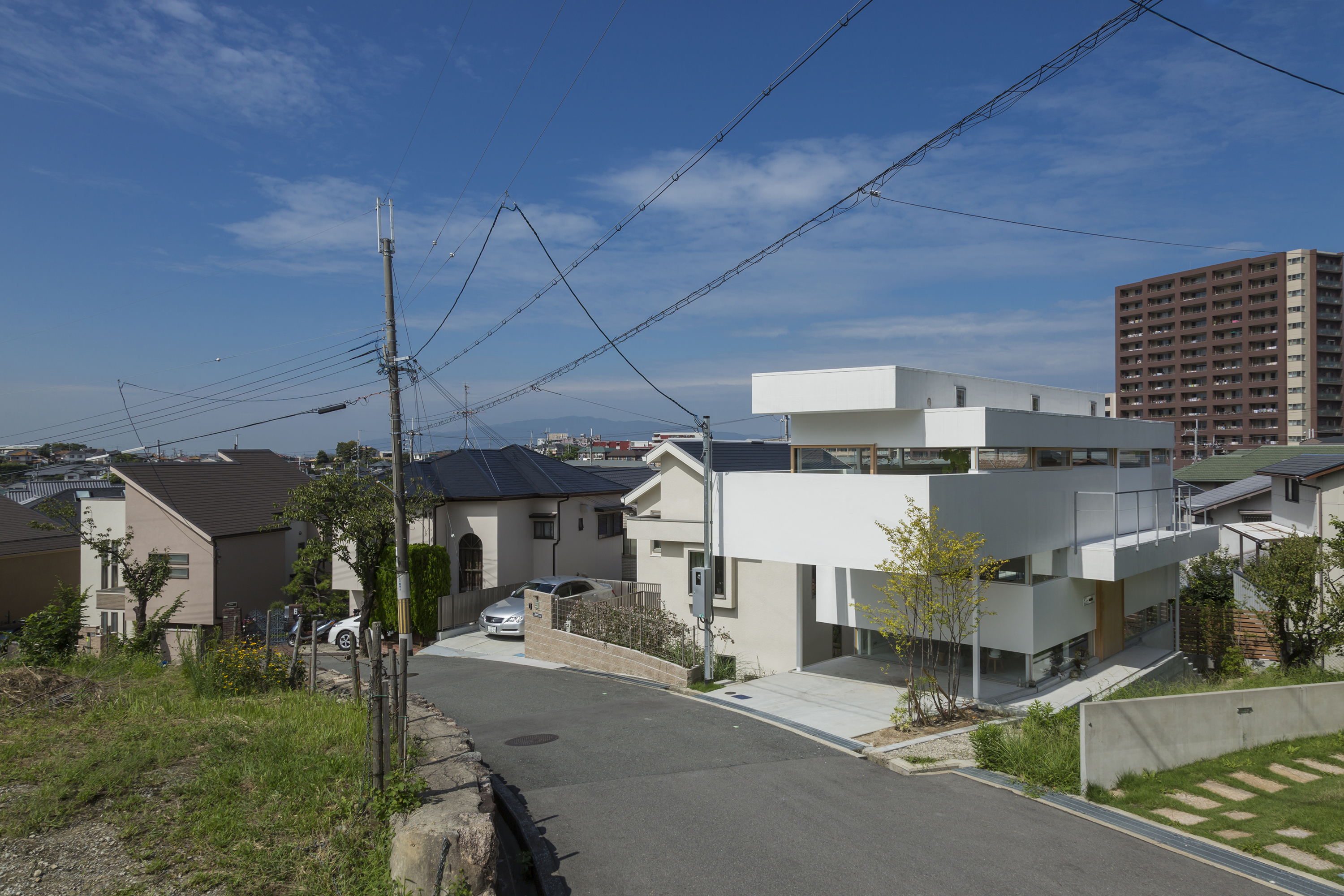
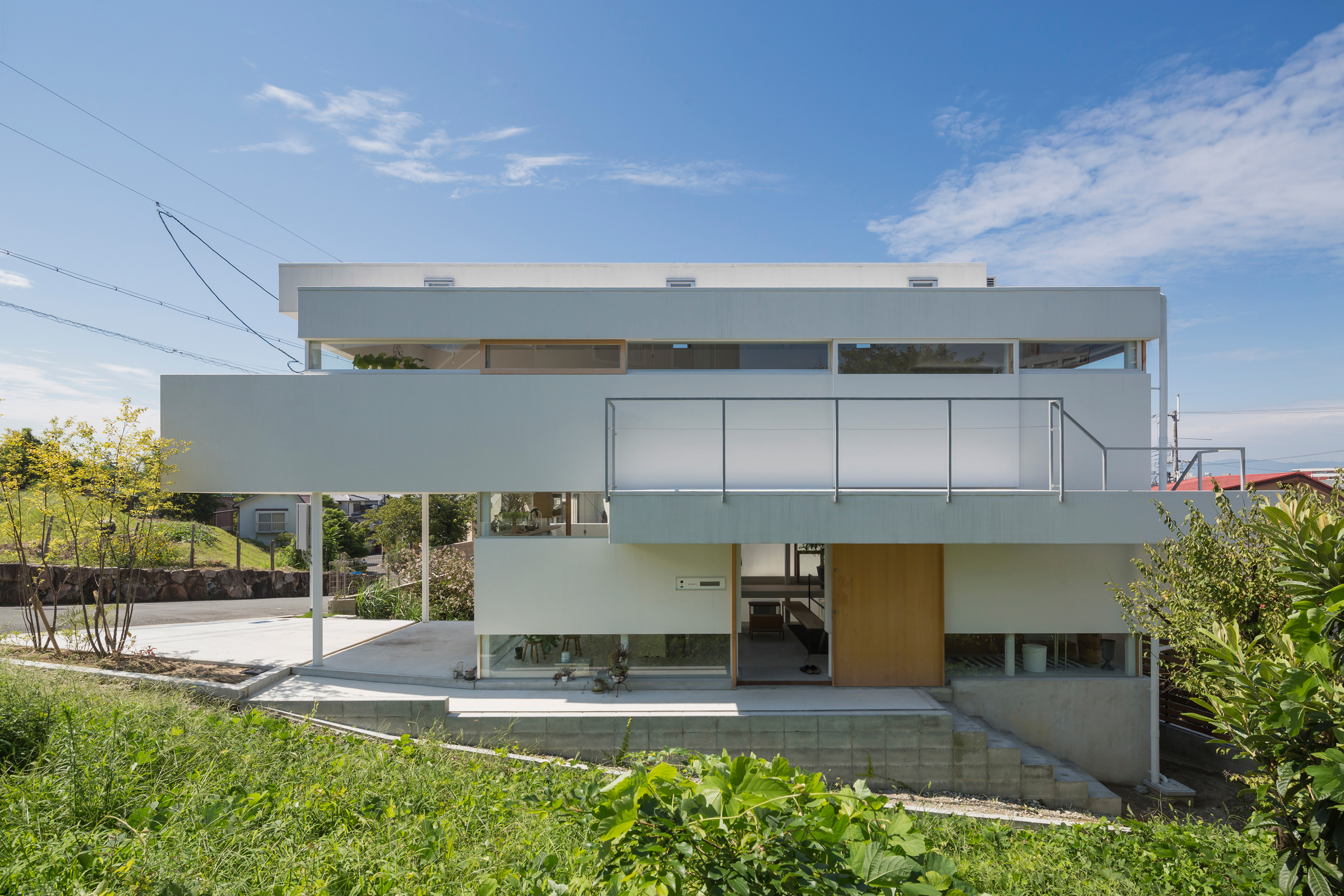
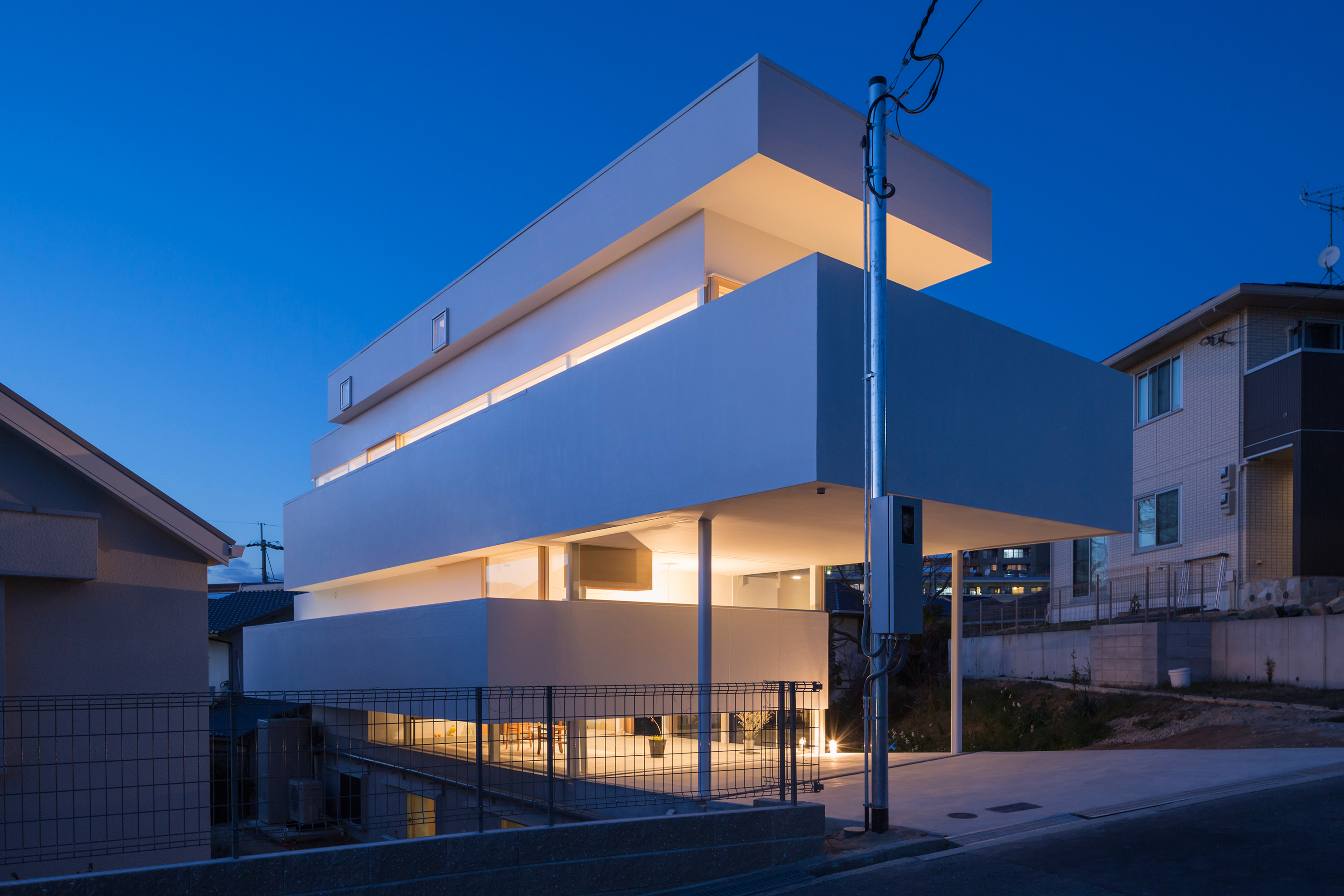
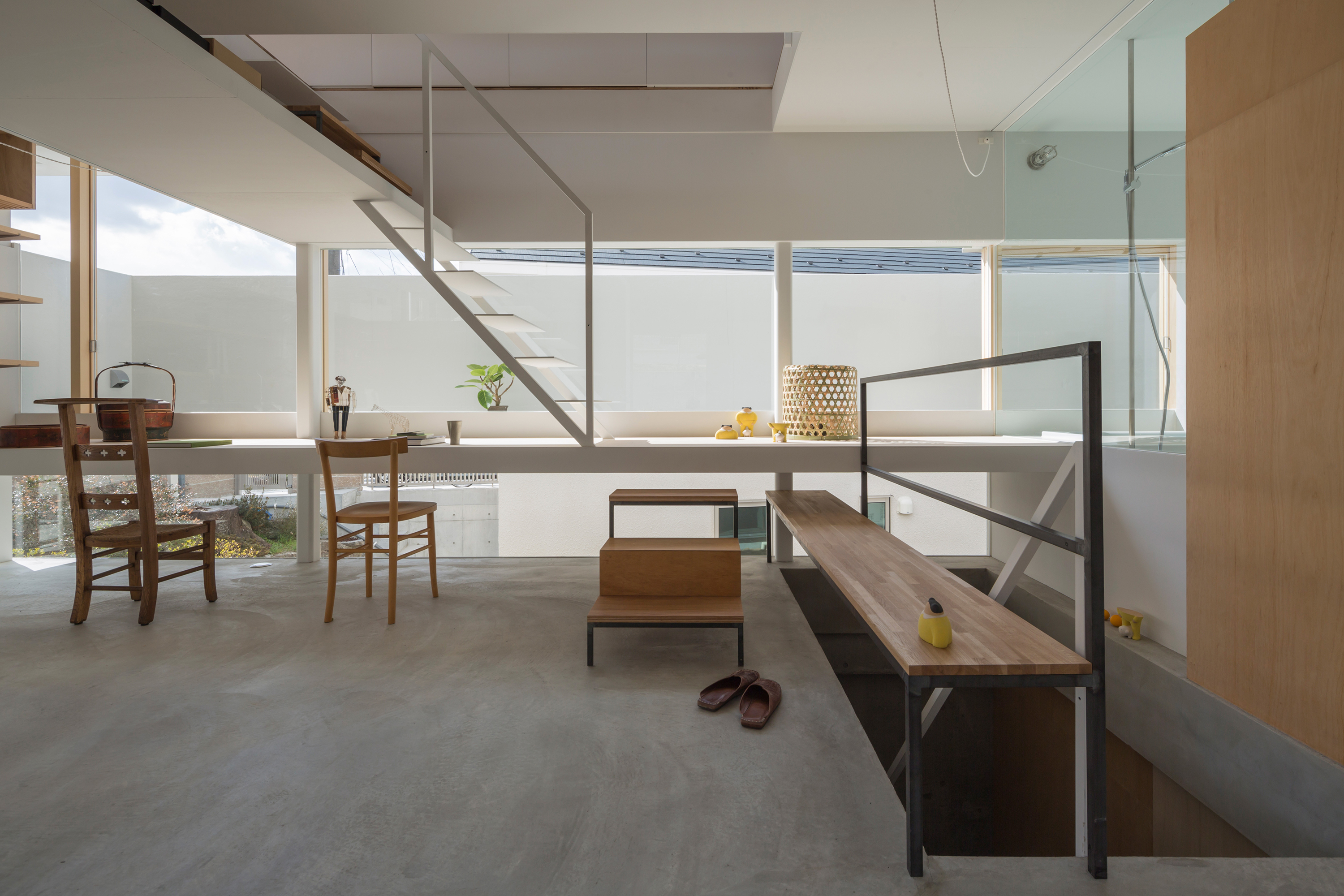
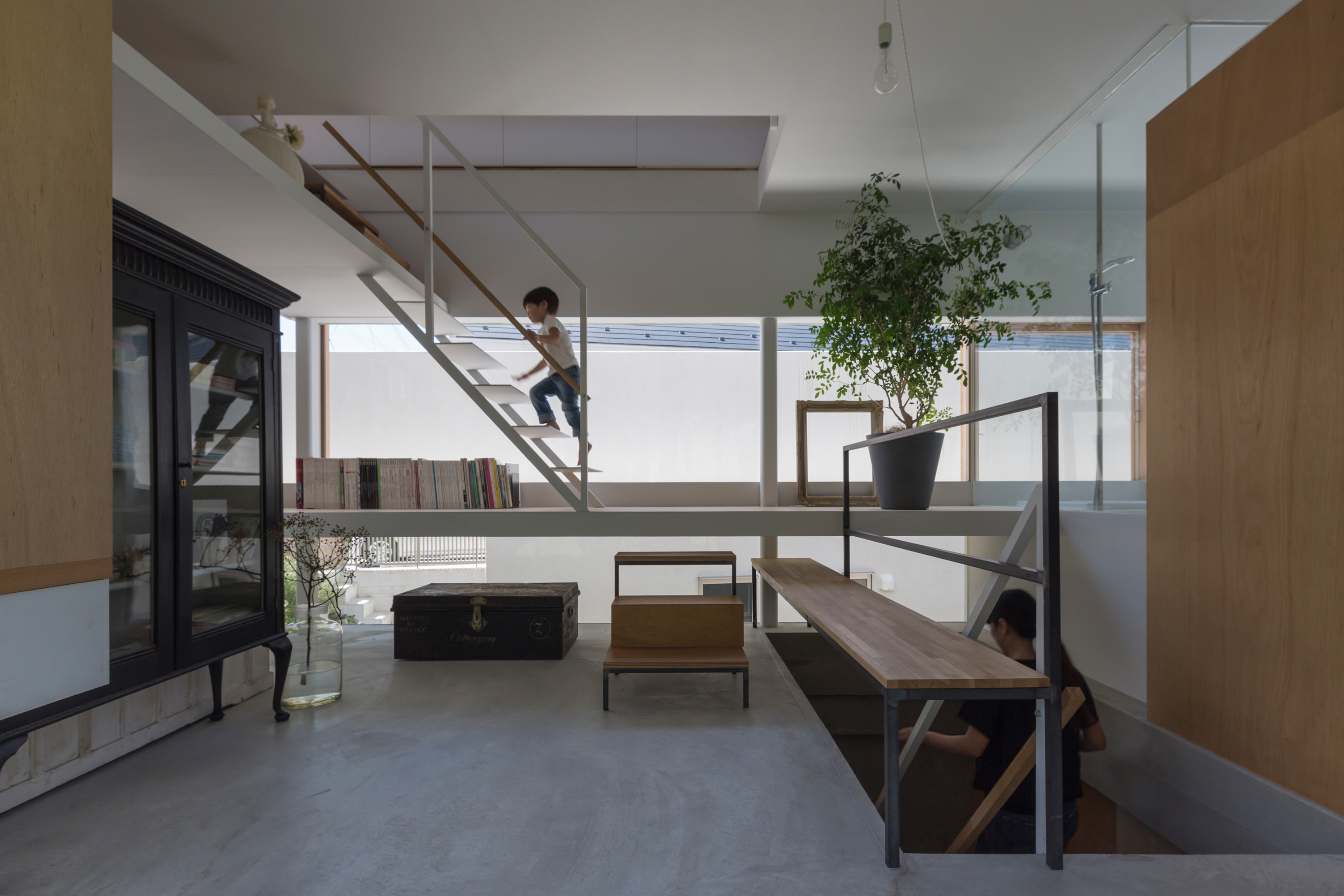
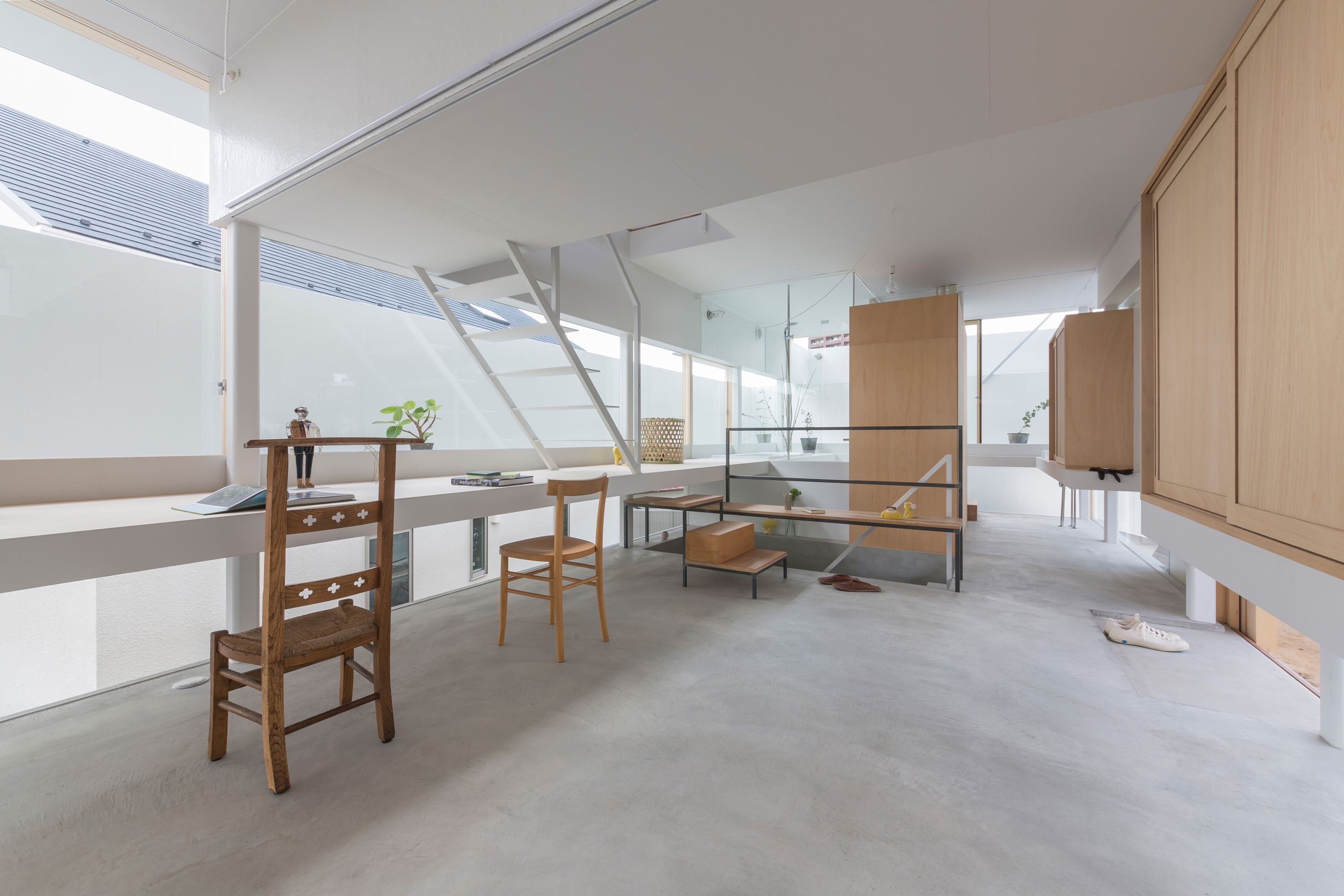
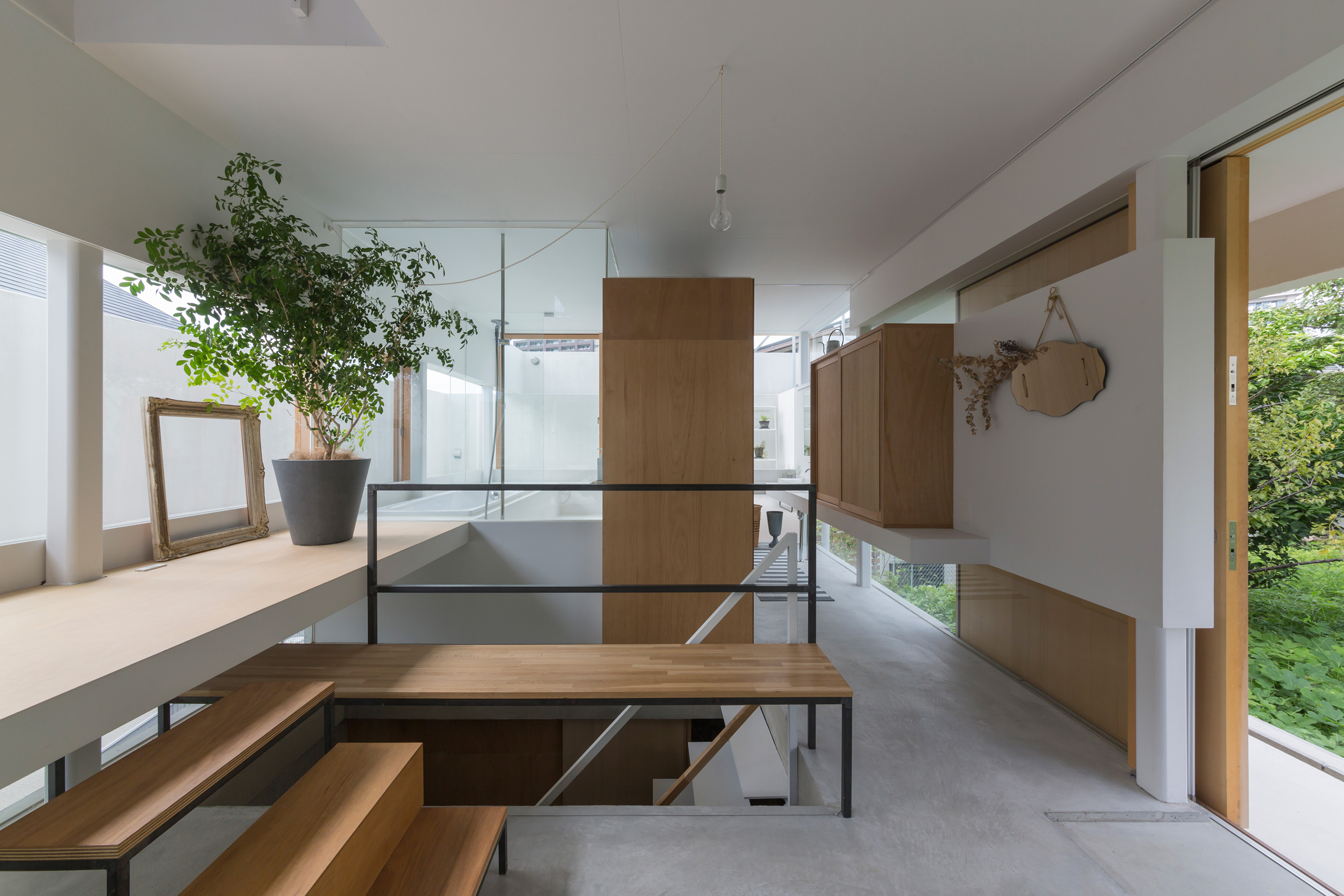
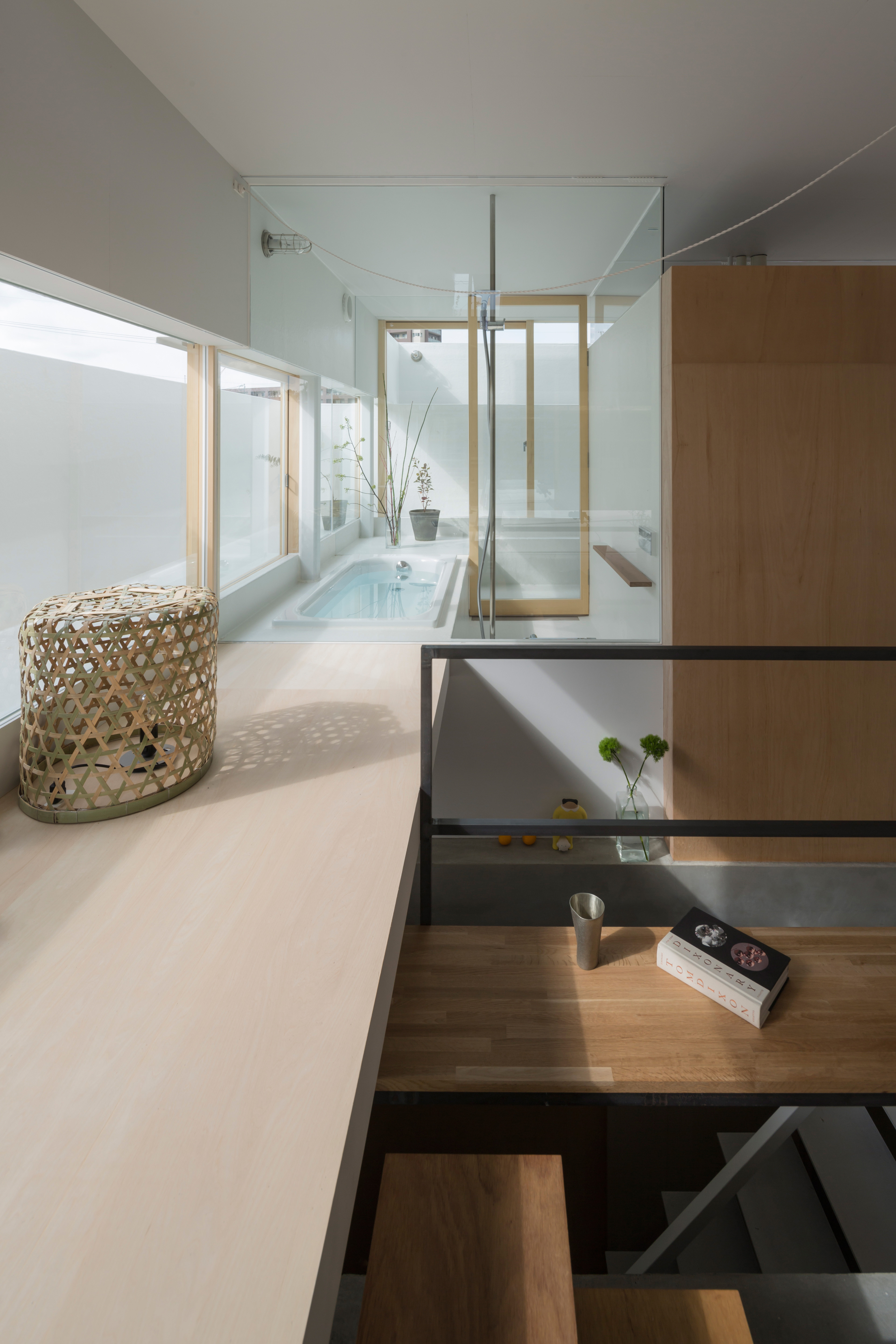
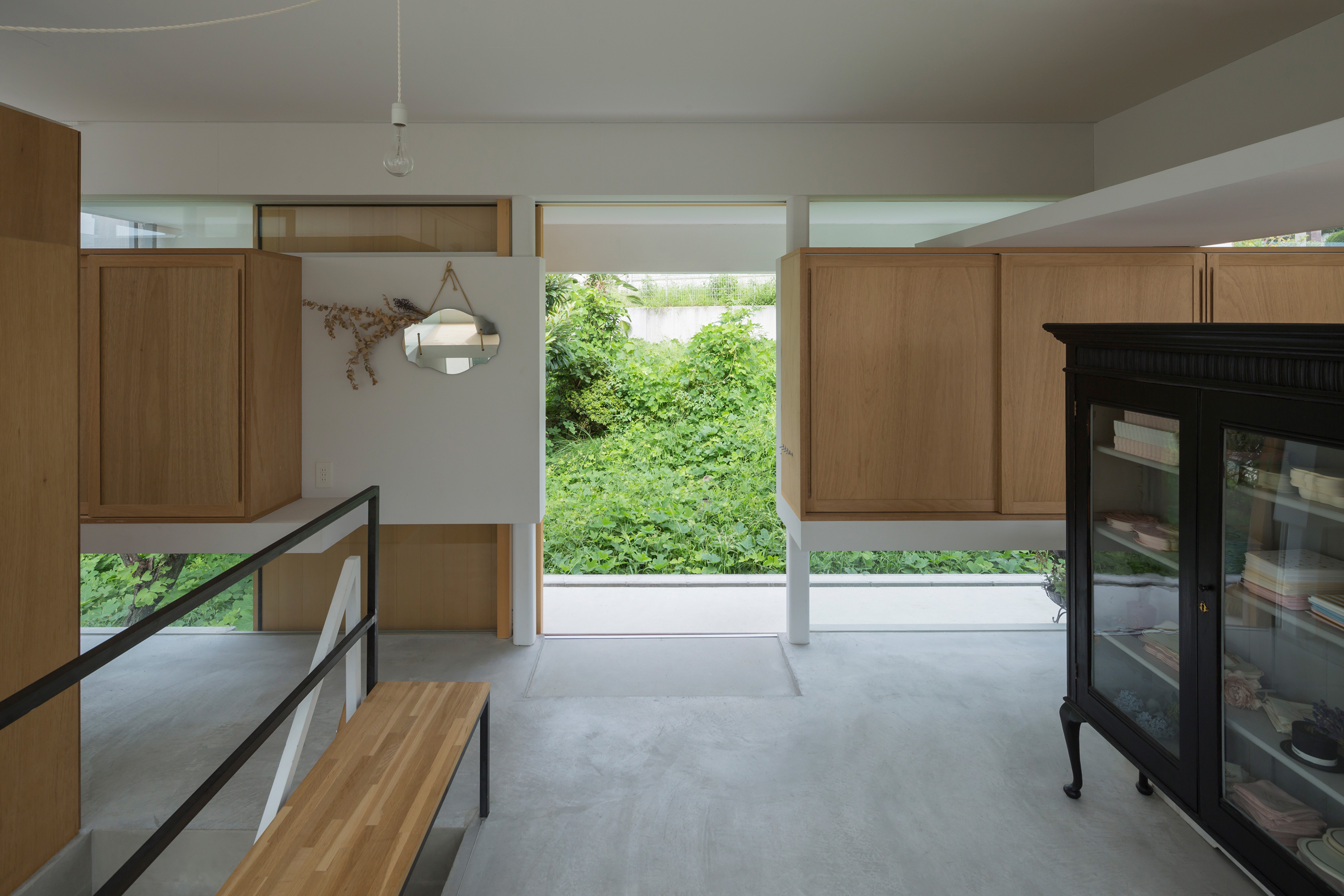
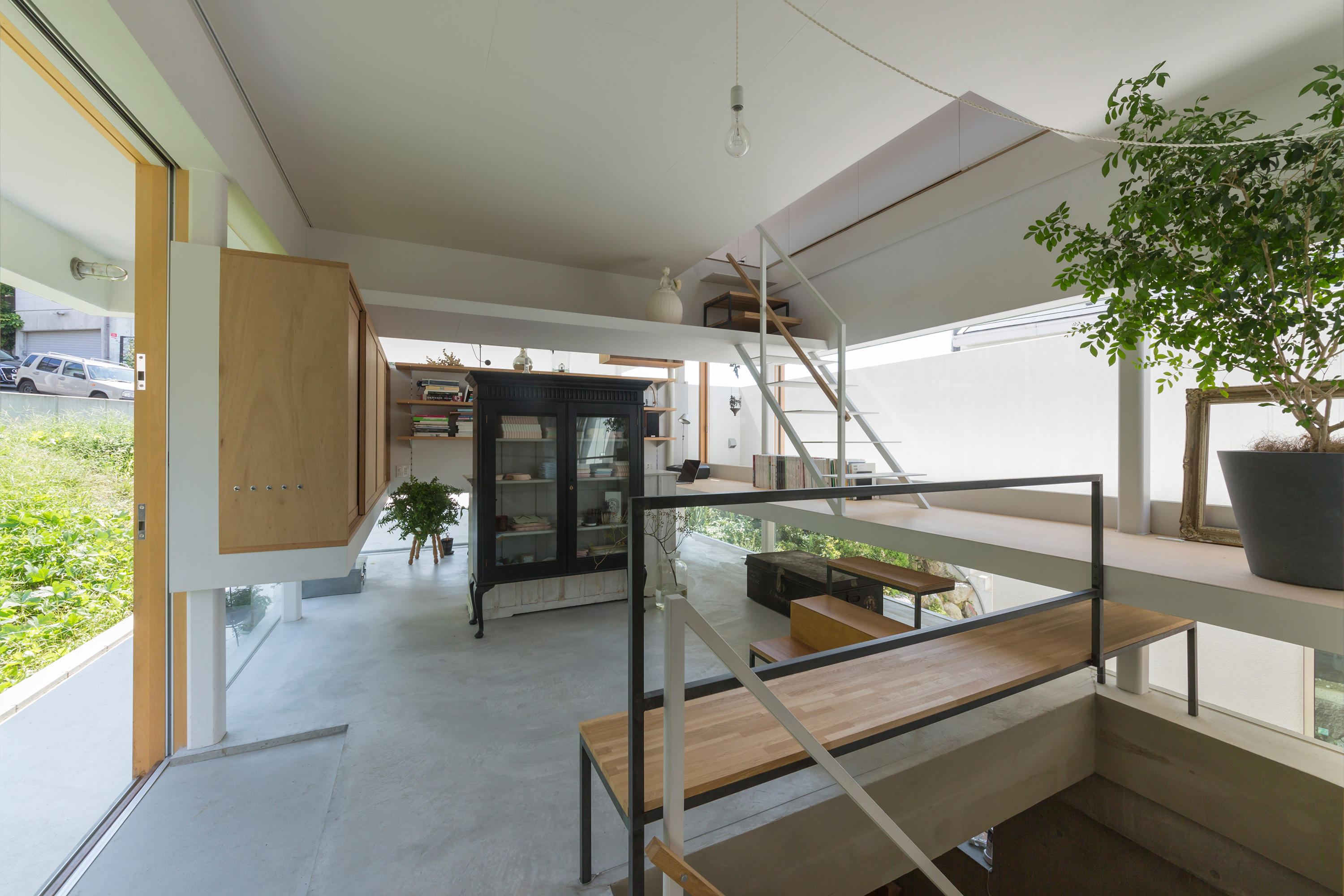
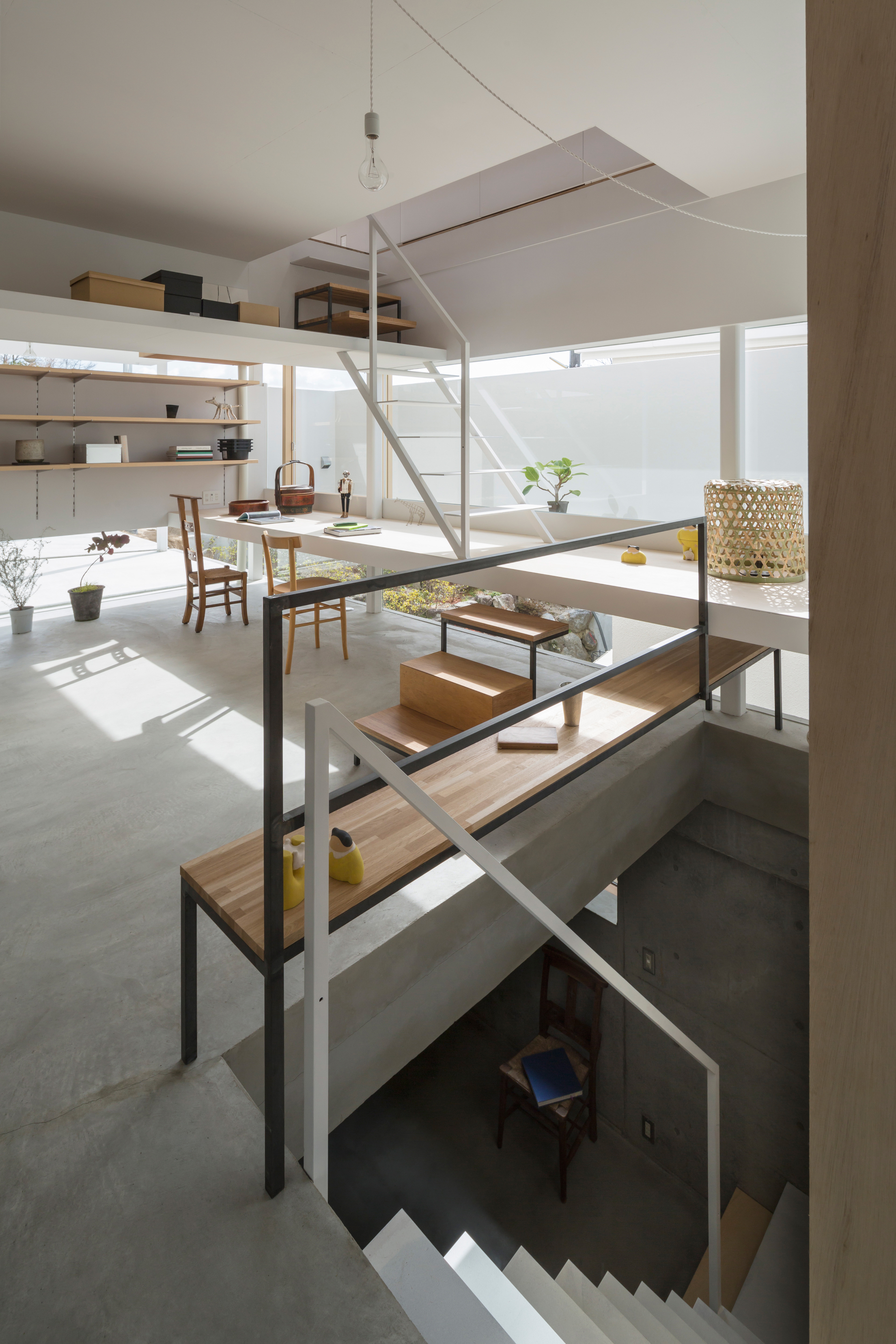
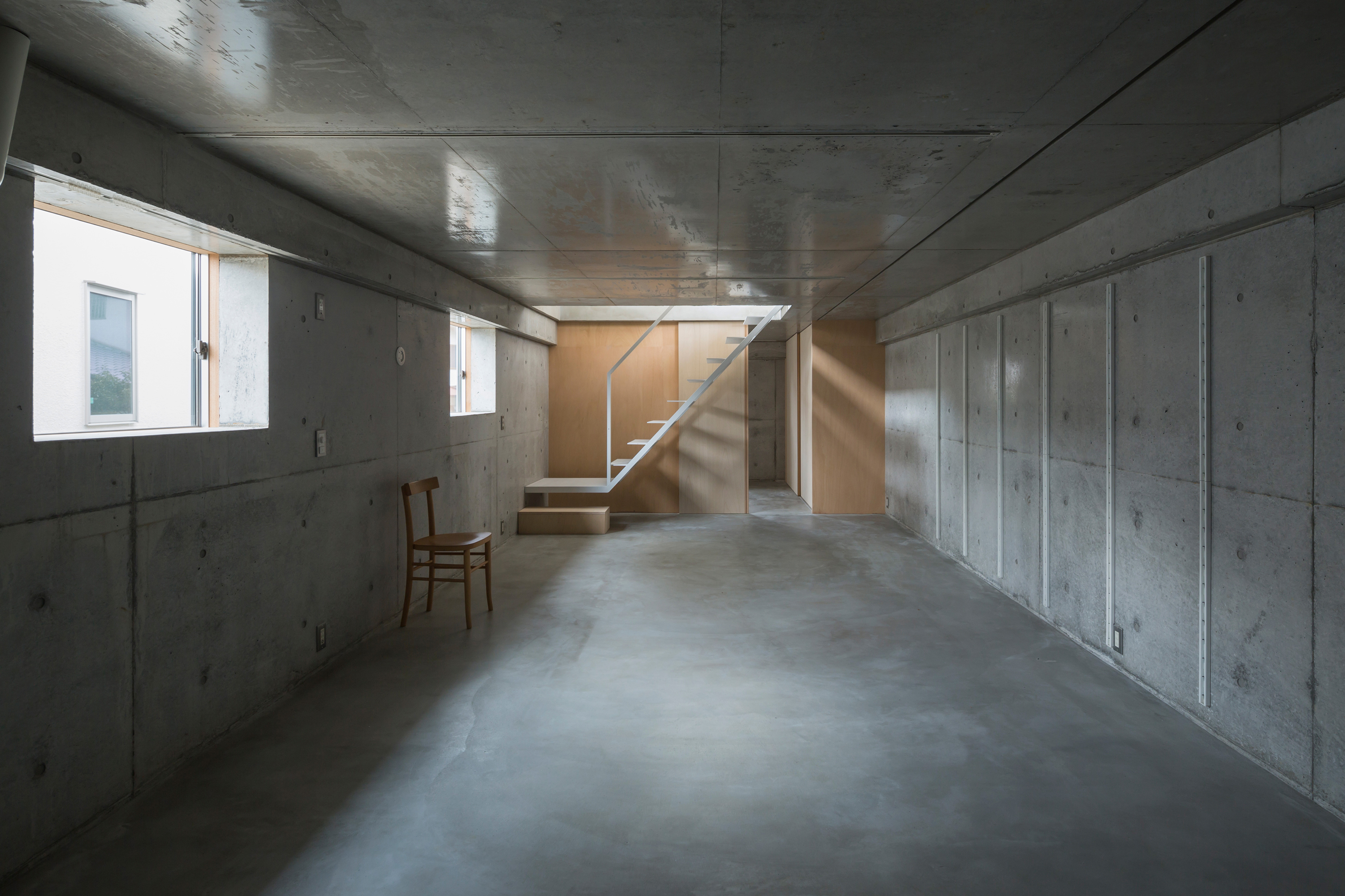
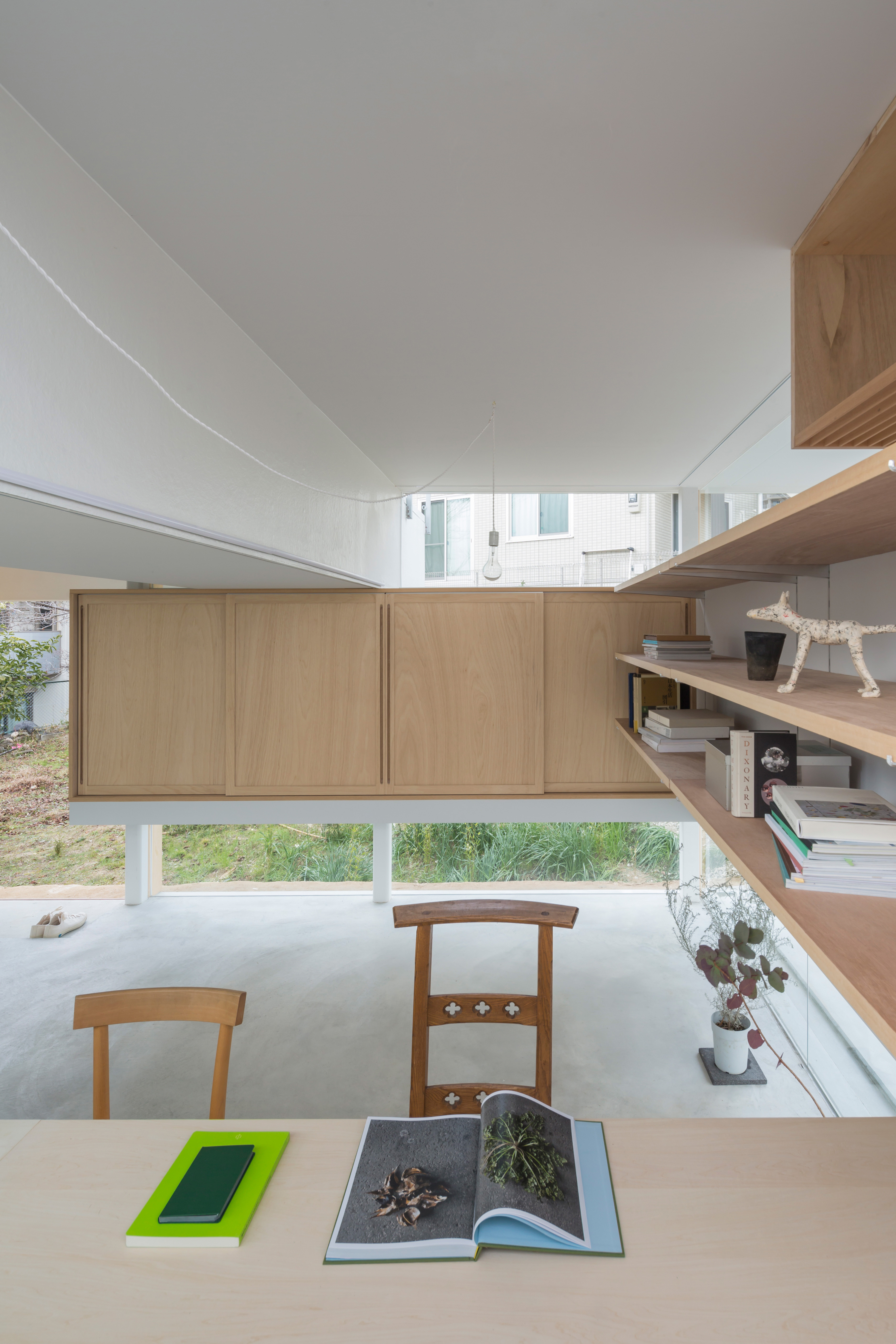

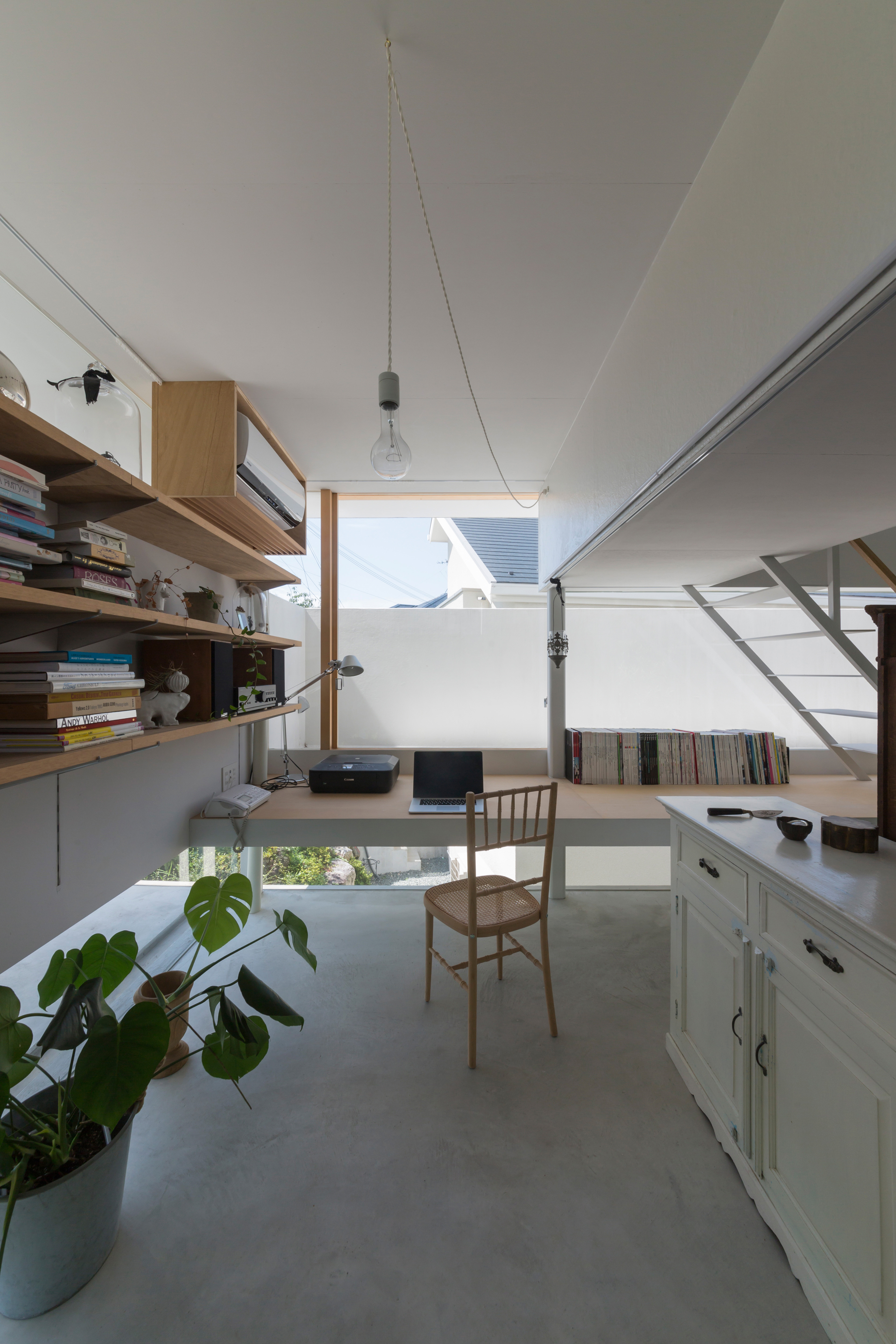
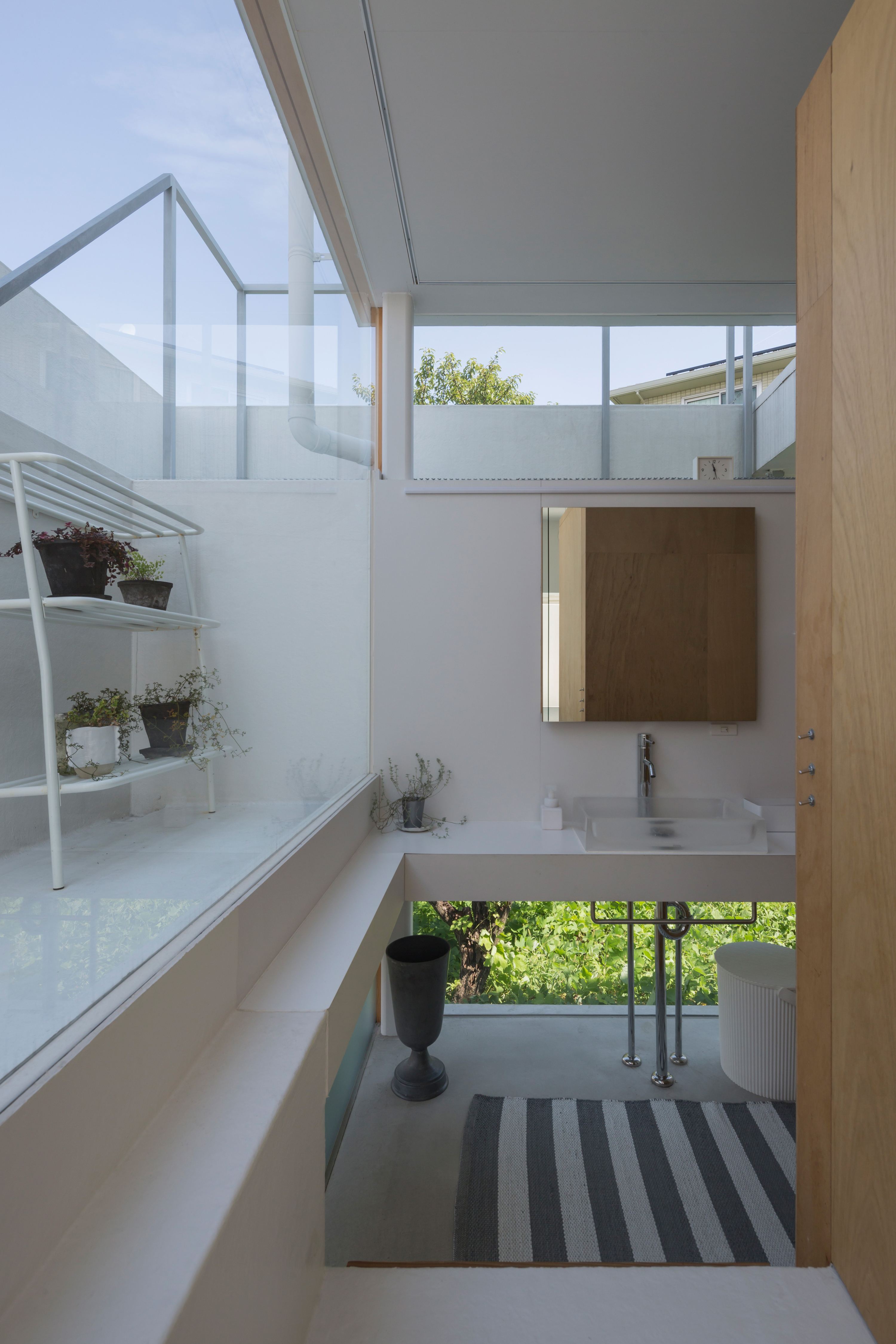
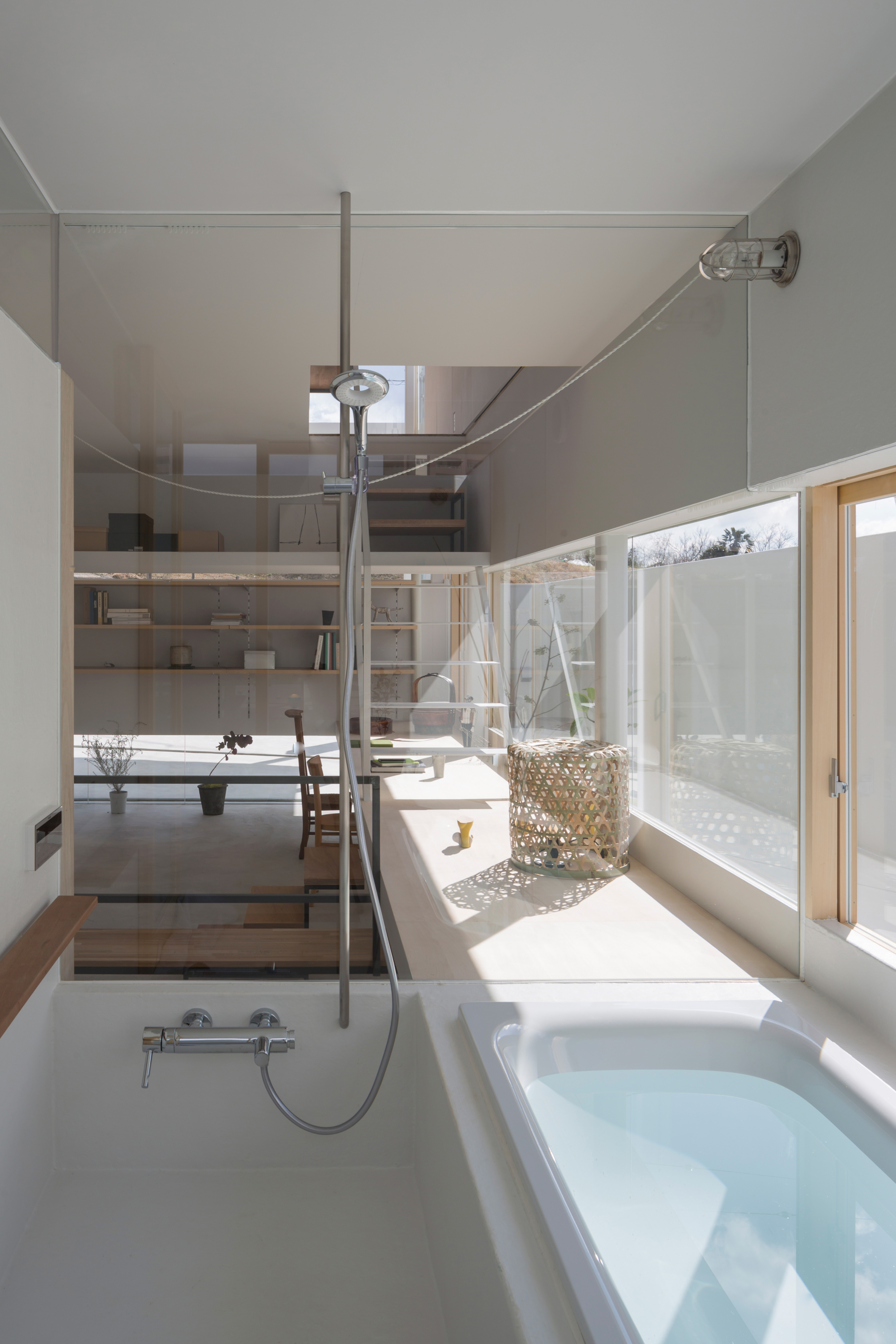
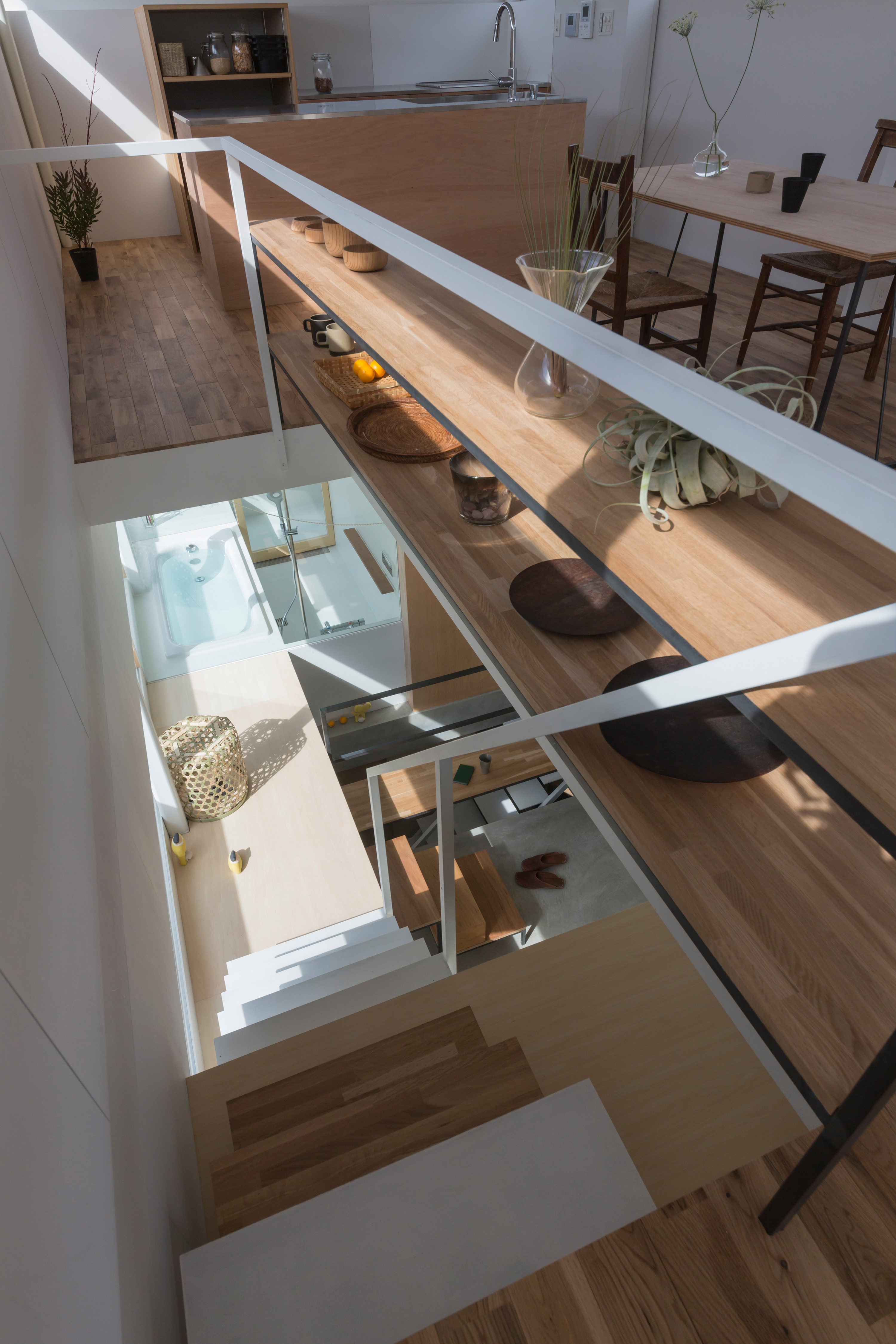
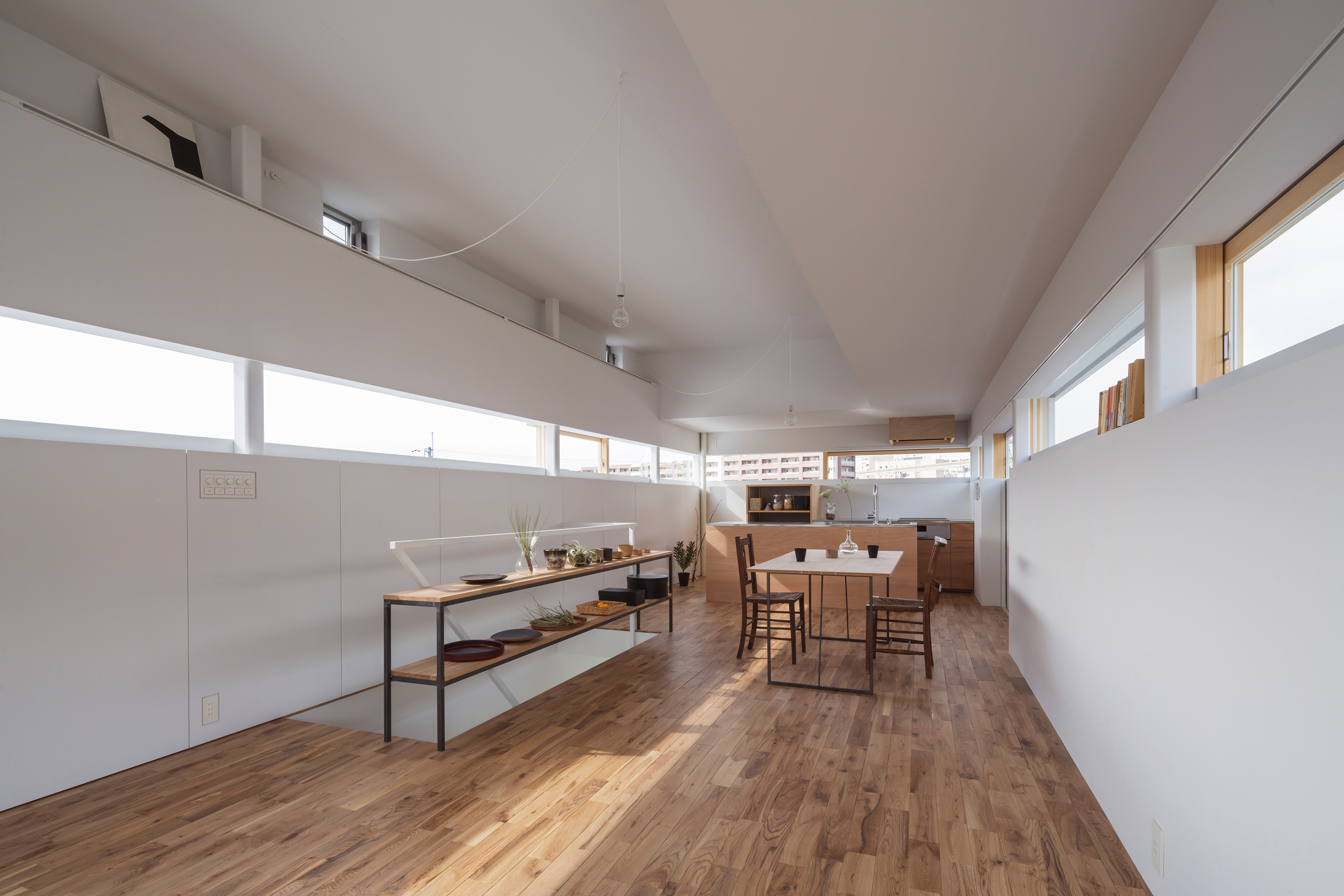
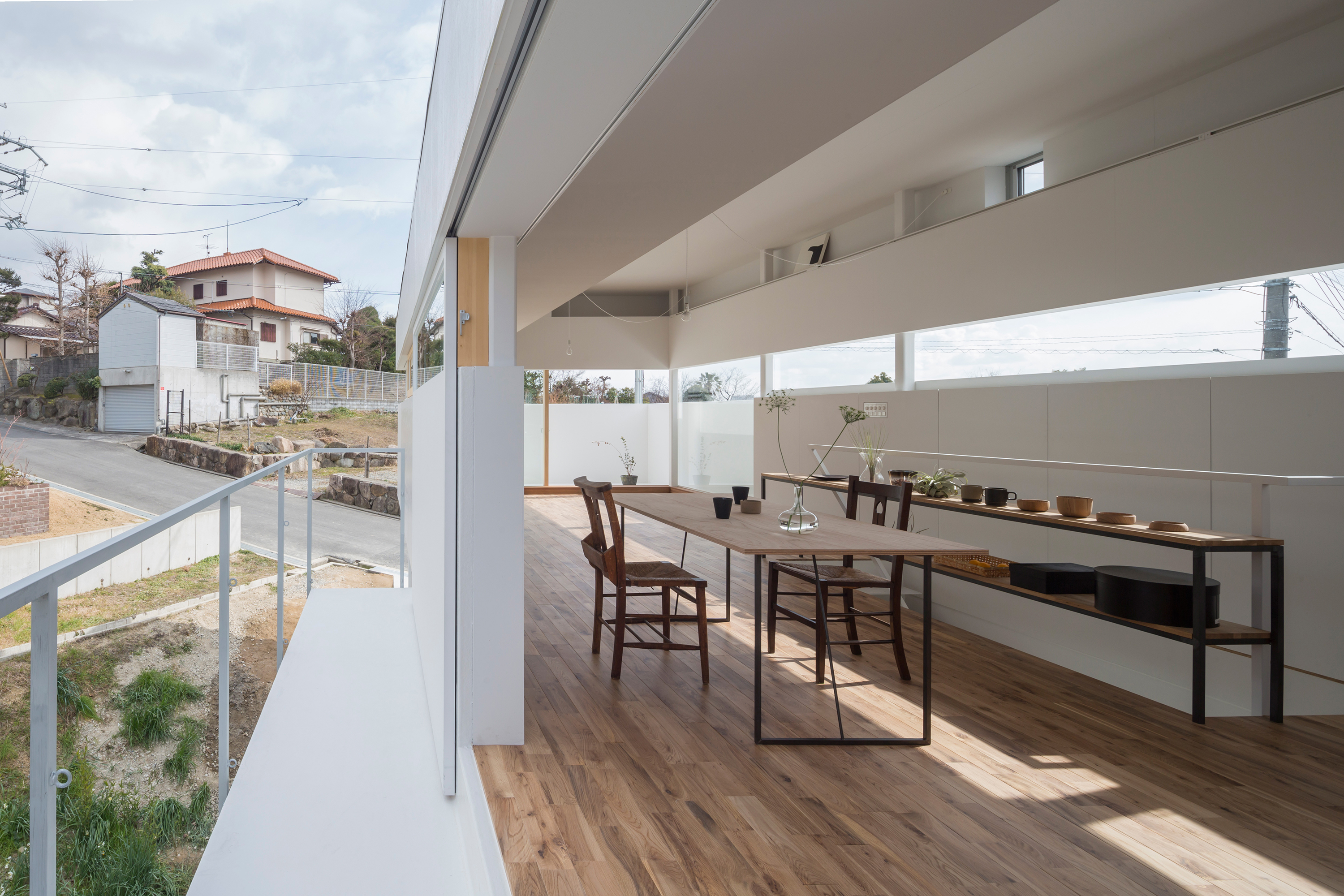
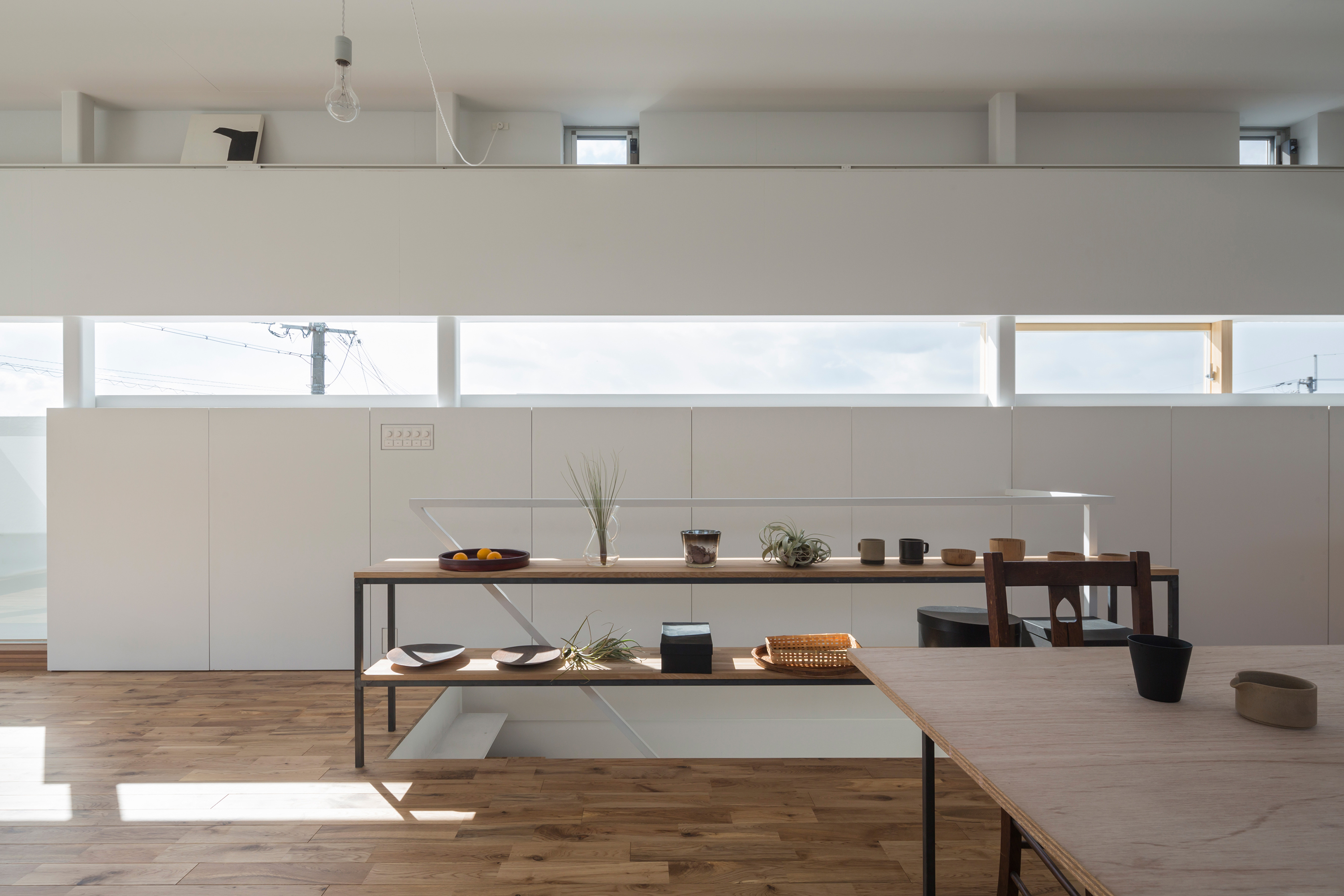
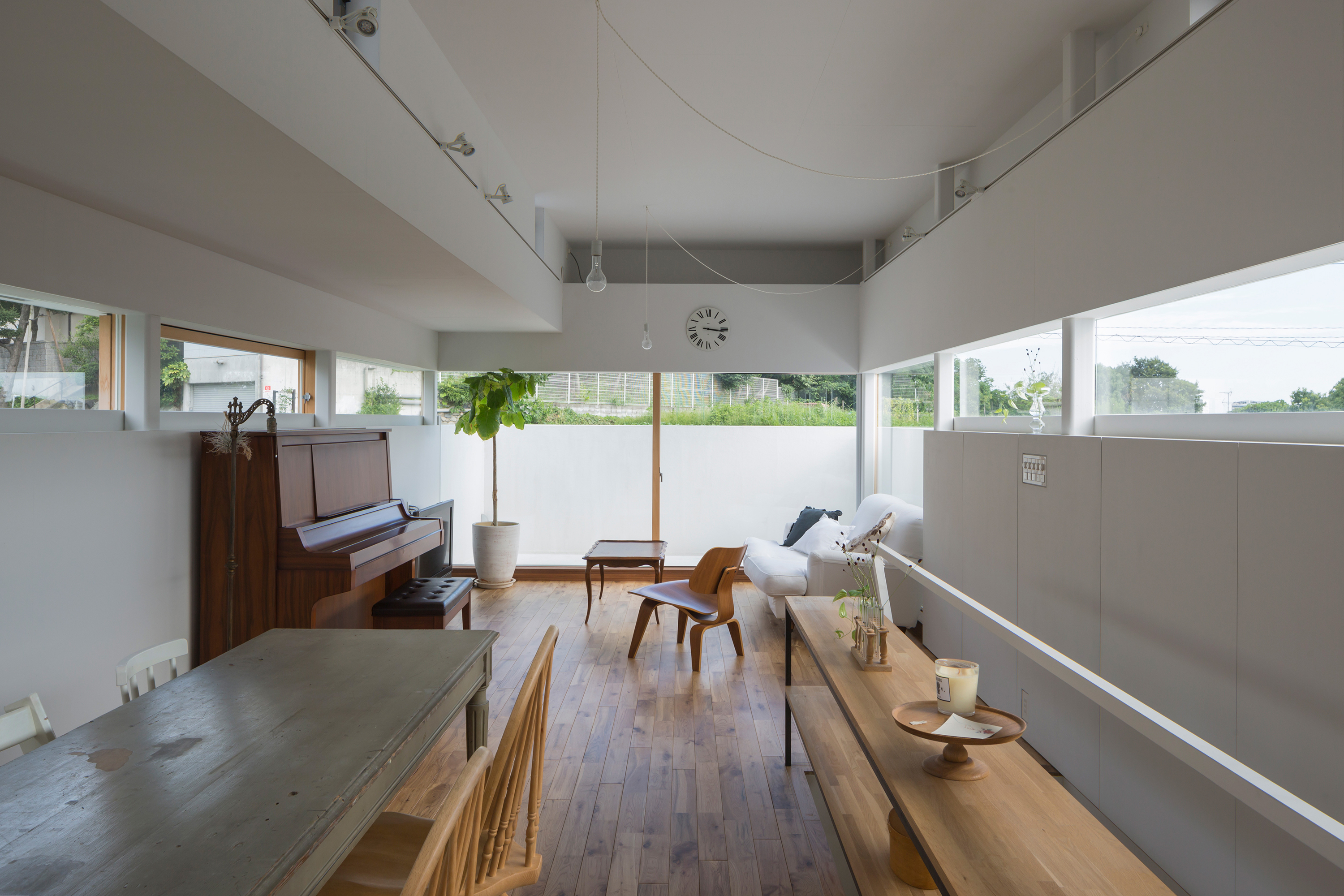
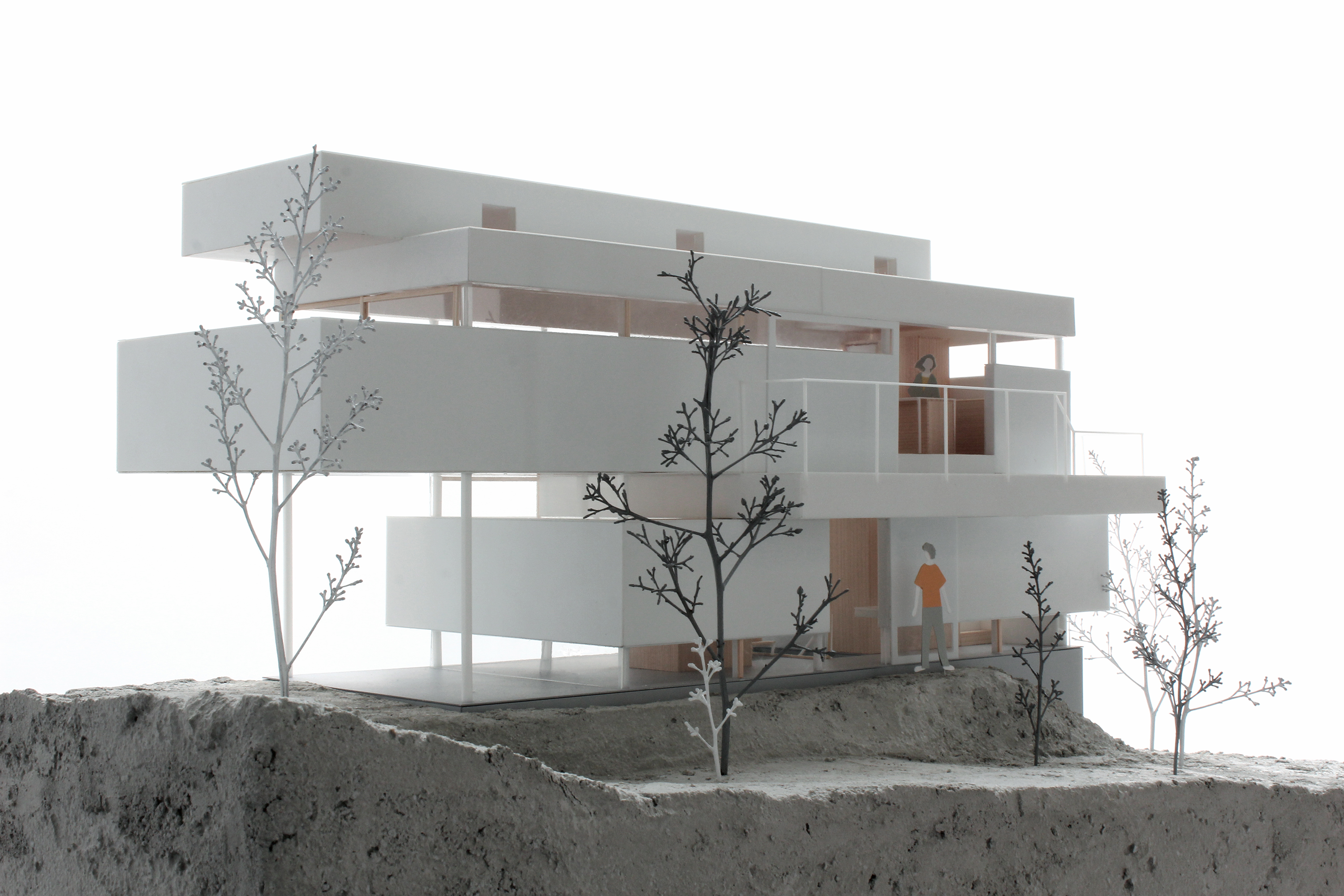
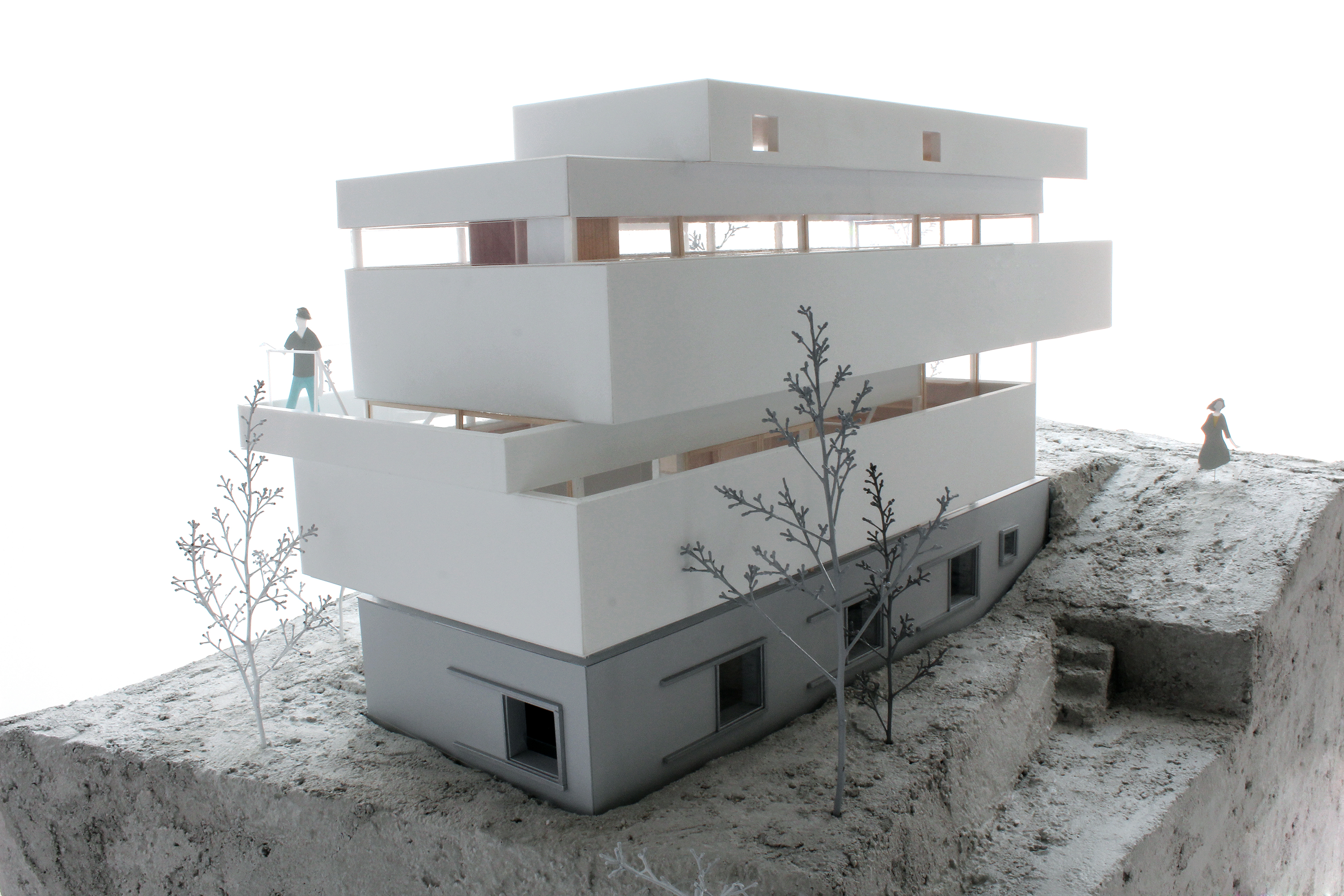
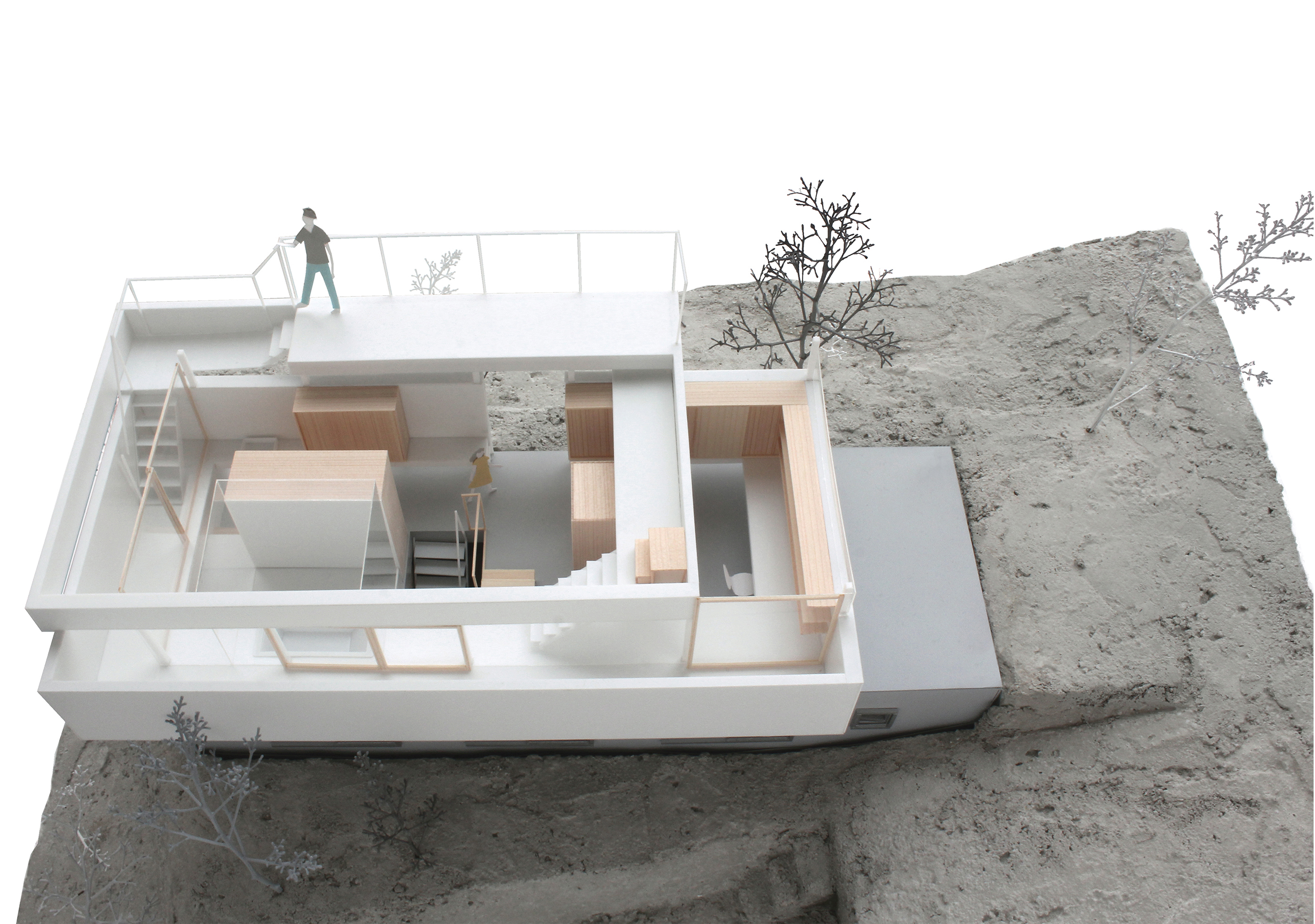
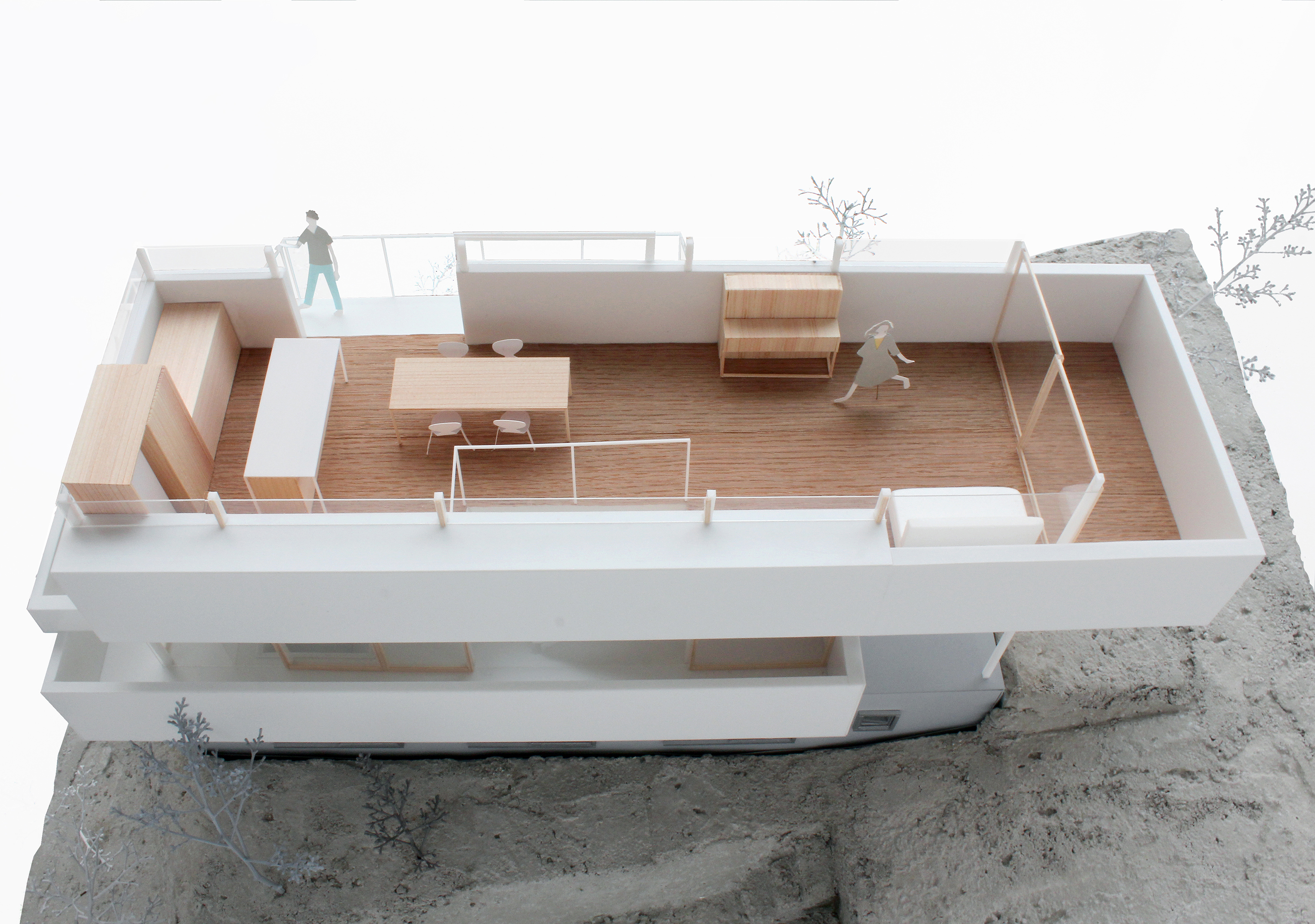

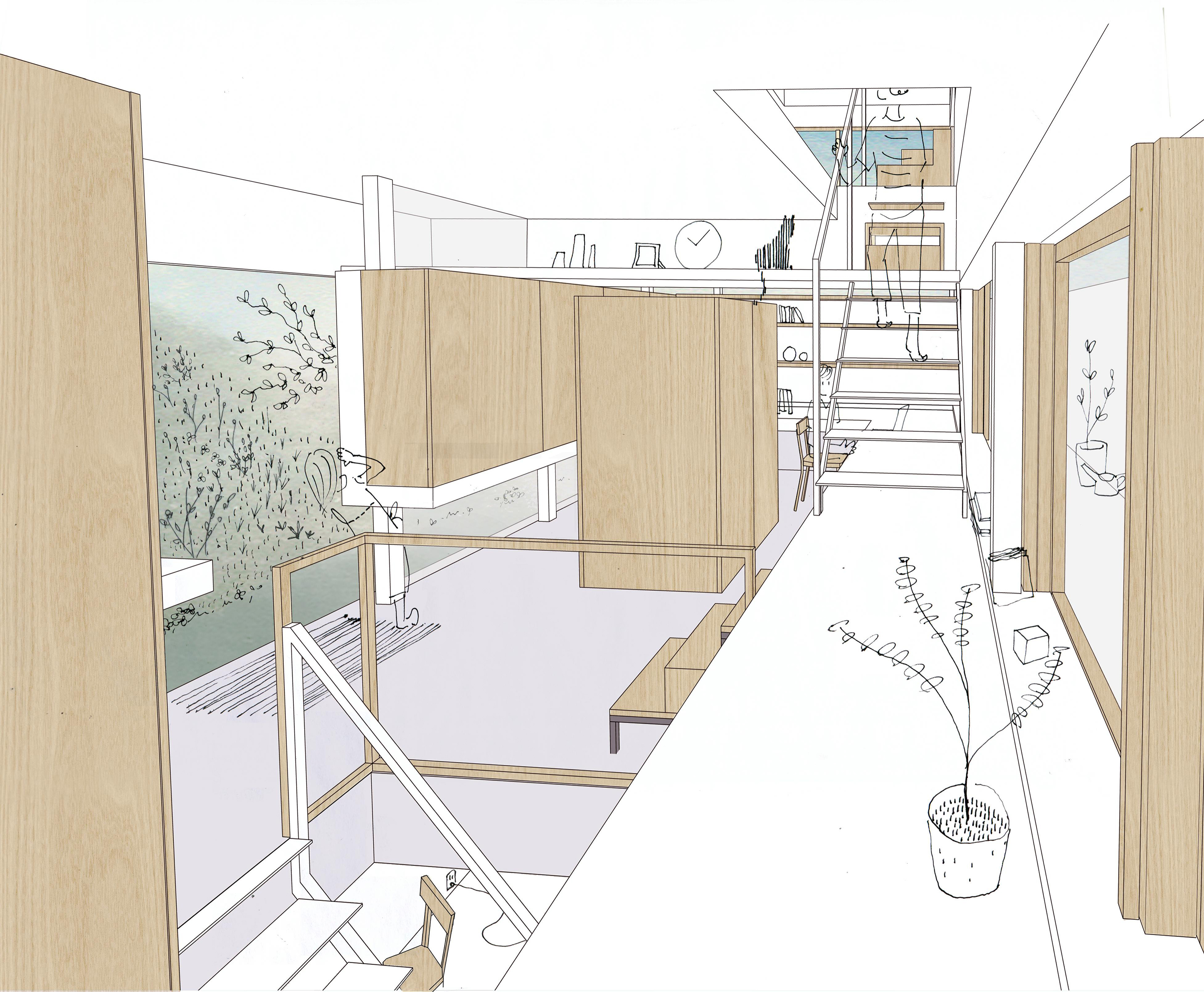
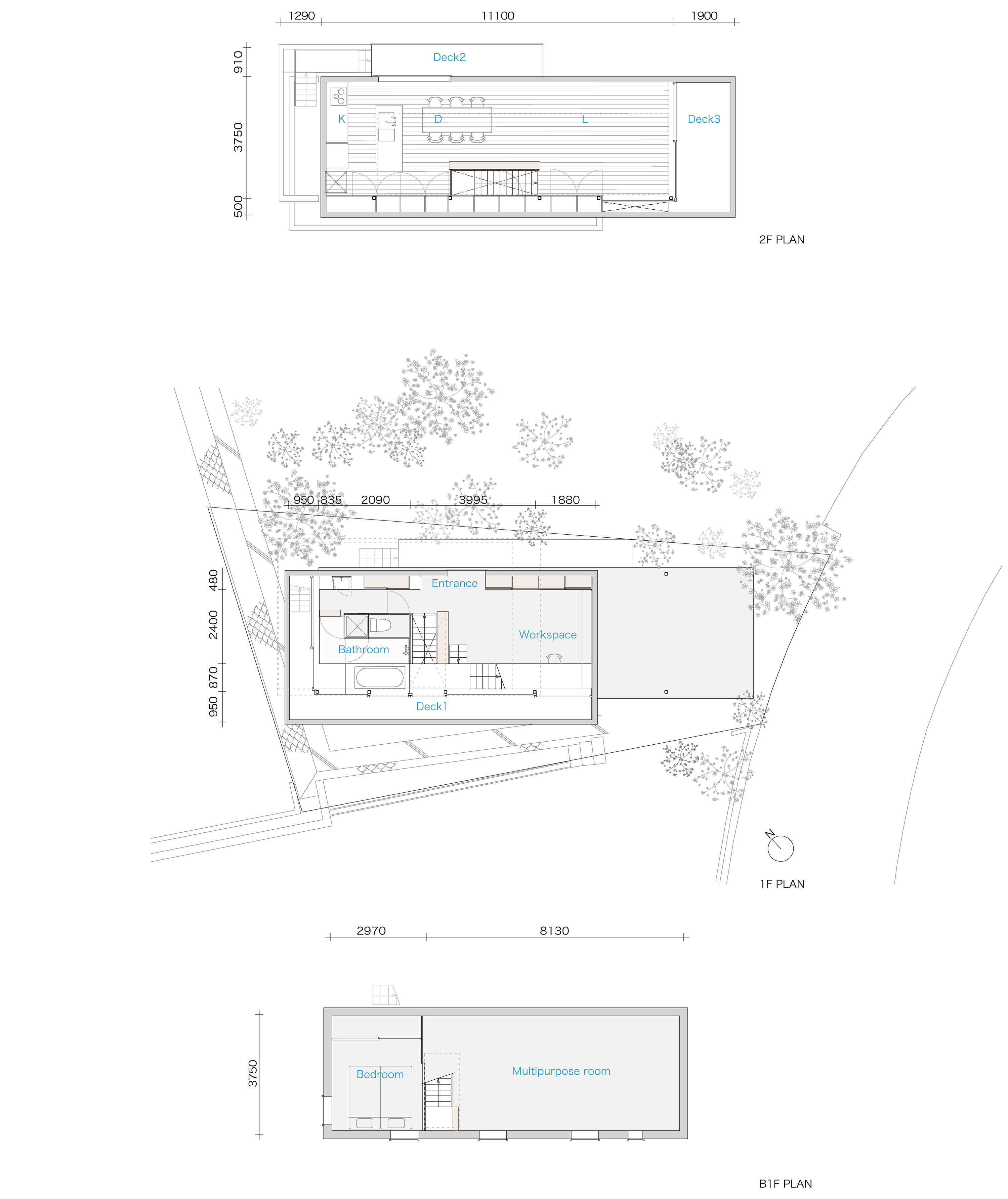
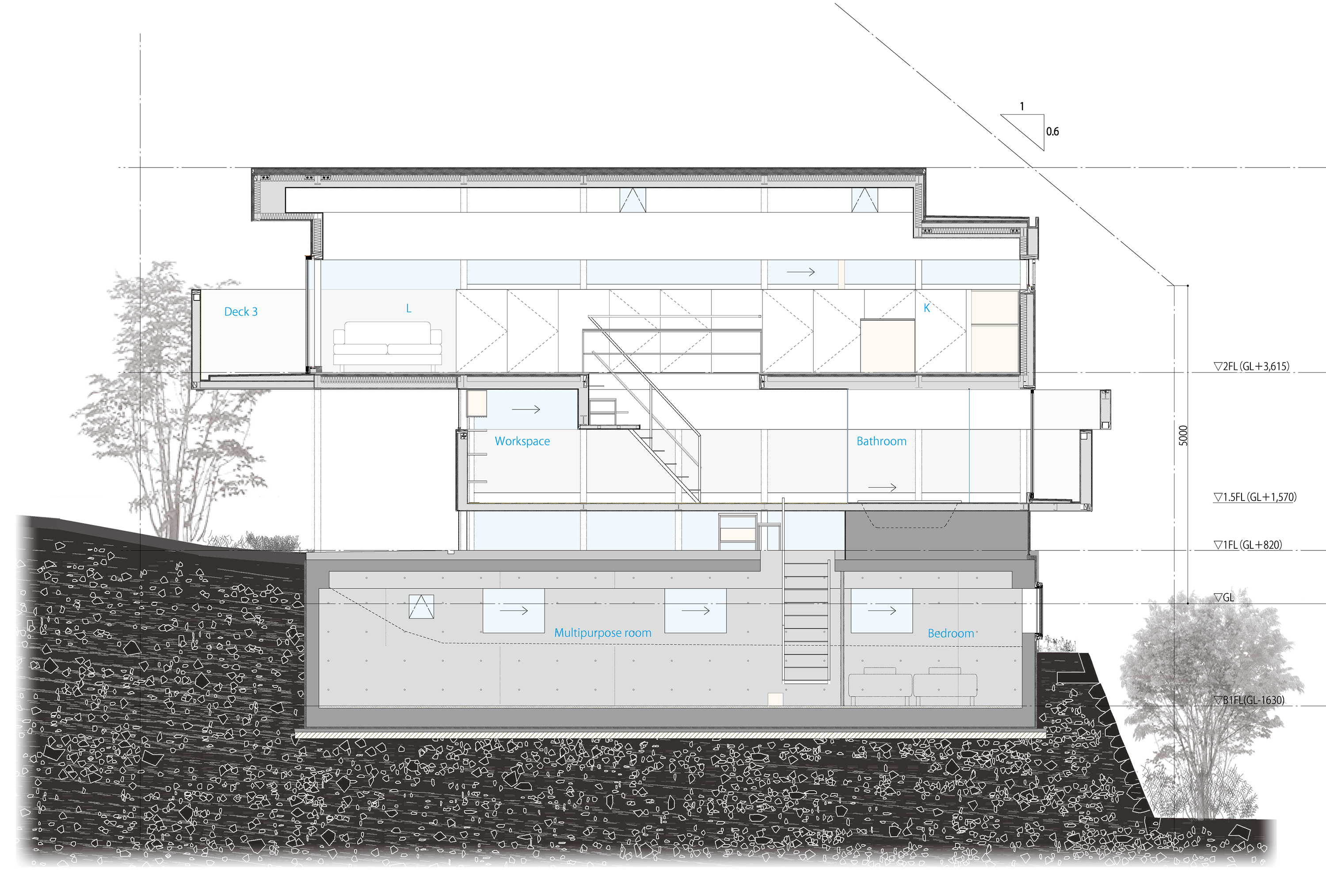






























動的な抽象性
建築を立ち上げる際、階段や手摺りといった、床、壁、天井による建築の主要な構成とは直接関係していない部分の取り扱いは難しい。なるべく見えないように扱うのは簡単だが、そうやって付加的なものを空間から減らすほど、静的で、抽象的な空間になっていく。そういった空間がもつ抽象性には人びとの生活、それを支える家具などが鮮やかに浮かび上がる効果もあるのだが、なにかそういった生活にまつわるものごと自体を否定しているように見えることがある。以前から階段や手摺りなどのエレメントを家具たちと同一化するようにつくることで、スラブ同士の関係などの主要な構成だけが浮かび上がりつつ、同時に脇役であるはずの設えも生き生きとした主題になるような設計を試みている。そうして人びとの活動や事物が、空間と混ざり合って、ものが溢れるほど、生活の豊かさとともに建築がまとまっていく。この動的でかつ空間の抽象性を失わない、〈動的な抽象性〉とでもいうべき質をたたえた空間をつくり出すことはできないだろうか。
この敷地は隣地に三角形に残された建築不可の土地があり、道を挟んだ向かいは農地として利用されるなど比較的開けていたのだが、クライアントは適度に外部からの視線を遮りつつ暮らしたいようだった。敷地は細長く不整形な斜面地で道路から下がっている。壁面後退の指定も厳しく、日影規制もあったので、デッキや庇は壁面後退線にかからない法の緩和を利用して周囲と関係をつくりだしつつ、適度に閉じる方法を探すことにした。まず日影規制を受けない軒高7m以下にするため、地下1階地上2階とし、その地上部を7層にスライスしてずらしながら積層したり抜いたりすることにより襞深い外観をつくりだした。その点では同時期に設計していた「松ノ木の住居」と同じような操作だ。小さな住宅の建ち並ぶ敷地に建つ「松ノ木の住居」では分節をより強調させるために素材を切り替えたが、ここでは敷地の密度感に合わせ、内外まで襞を深く展開するためにすべて白いFRPとした。帯状の空間によって、建築を家具スケールに微分し、人びとの活動を支え、内部を守ることとした。
ずらされたヴォリュームはバルコニーや庇、窓として機能し、内部に生じた段差は机や踊り場、アルコーブ、棚などになる。ずれの隙間に設けた窓からは、隣地の草むらや、周辺の瓦屋根の連なりが水平に切りとられる。こうして建築の設え、住人がもちこんだもの、さらには周囲の風景と、ずれながら積層されたヴォリュームとが混じり合い、動的な抽象性を獲得できないかと考えた。
Dynamic Abstractness
It is difficult to deal with architectural elements such as stairs and handrails that don’t have direct relation to the main architectural composition.
It might be my prejudice, but architectural space gradually becomes static, when additive elements are reduced to be abstract. It also has an effect on various human activities and furniture to vividly come to front, but sometimes it appears as if they are being denied.
I have tried to achieve a design, in which the main architectural composition, such as relation between slabs, stands out but at the same time secondary elements as mentioned above are also become a vivid issue of the design.
My query was to find out whether it is possible to create space that has quality of, so to speak, dynamic abstractness, enabling space to all the more get settled when activities and things are mixed with the space and objects are flooded there.
Having a left over, unbuilt triangular plot in its neighboring land and an agricultural land across the street, the site was relatively open. The client requested a house there, in which they can live comfortably protecting their privacy appropriately.
The site is narrow and long, irregular-shaped and sloped. The area is enforced with strict wall-setback restriction and also had a shadow regulation. Under the limitations, we considered creating stretch of space by using mitigation of the regulation that permits decks and eaves to protrude over setback lines. Exempted from the shadow regulation, the eaves height was decided to be less than 7 meters. The volume resulted in two-stories above the ground and one underground story. The part above the ground is sliced into seven layers, shifted, stacked and eliminated to create deep pleated exterior appearance. The manipulation is similar to House in Matsunoki, which was being designed around the same period. In House in Matsunoki, different materials were used to articulate segments, but in this residence, all are finished with white FRP so that pleats can be made deeper both inside and outside. In this way, we tried to make relation with exterior space, while protecting the inside with wrapping belt-like space.
The shifted volumes function as balconies, eaves and windows outside, while the level gaps generated by the shift work as a desk, landings and shelves inside. From the windows created in-between stripes, nearby bushes, a series of tiled roofs are framed horizontally. In this way, we aimed to achieve dynamic abstractness, in which the architectural design, residents’ properties, surrounding landscape and the stacked shifted volumes are mixed.
—
x Close
タト